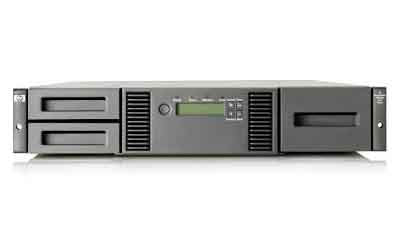Evolution of the Virtual Tape Library – Introduction to Tape Library
VTLs have been around a long time. When the tape was slow and backup windows were shrinking in mainframe datacenters three decades ago, somebody smart came up with the idea of "front-ending" the tape system with a cache of disk drives. You could use this cache as a "virtual" tape library, enabling backup data to be written to the cache very rapidly and allowing the production system to get back to work.
Another advantage was that tape jobs could be "stacked" on the VTL, prior to writing the data to tape. This addressed a problem in mainframes that resulted in tape media being used very inefficiently, enabling write jobs to use the entire reel or cartridge rather than writing data in dribs and drabs across many pieces of media.
Navigator system provides support and maintenance for hp storageworks msl2024 tape library
Once data was copied to the VTL disk, as an "off-line" or "near-line" process, the cached data would then be written to the tape system where it could be used to make local and off-site copies of the backup data. This multi-stage process leveraged VTLs to eliminate what we now call "data friction": production latencies brought about by slow data copies. It is worth noting that the original VTLs were software-based. That is, software running on the mainframe was used to designate some of the disk storage (DASD) for use as the VTL cache. Later, vendors introduced disk arrays that were explicitly designed to be used as VTLs, but the first VTLs, like storage infrastructure generally, were software-defined.
The second wave of VTLs was targeted at the needs of the distributed computing environment, where they sought to address several challenges. For one, the bandwidth of early distributed LANs was too constrained to handle backup data traffic from many servers simultaneously, and scheduling multiple backups was problematic, even with the best backup software.
Reinventing VTL
Thus the concept of the VTL was re-invented. VTL appliances could be installed in the same subnetwork as the servers whose data they would back up. Plus, in addition to serving as a write cache for a tape library, each VTL appliance became a full-fledged emulation of a physical tape environment, capable of representing multiple "virtual" robots and tape drives to expedite data capture, whether or not the actual hardware existed in the physical tape environment.
Behind the scenes, the idea was to do something with a VTL appliance that could not be done simply with backup software. By the late 1990s, the tape had fallen into disfavor both as a function of disinformation by disk vendors and of a mismatch between tape capacities and data growth rates. Smart backup software vendors, following the lead of server operating system vendors, began to support "backup-to-disk" functionality in their products. To differentiate VTLs from this generic implementation of disk-based backup caching, vendors added functionality like drive emulation and, later, deduplication, to their appliances.
Even then, the ultimate strategy was to unload data cached on the VTL onto tape to capitalize on tape's portability, the "air gap" it provided between accessible (and prone to corruption, deletion or unauthorized disclosure) production data and a tape-based safety copy, and the ability of tape-based data to be restored to any target, regardless of the vendor brand-name on the kit limitation of proprietary disk and flash storage arrays). A VTL was a stop-gap, resolving certain transport issues, but not a replacement for tape.
Navigator System builds and maintains any IT infrastructure to fit your needs.
Maintenance for your infrastructure gear may be the last thing you think about, but it's a necessity when protecting and maintaining the value of such expensive IT gear. We are receiving extremely great pricing that you can't get anywhere else!
If you have questions, please feel free to contact us at +91 9845451006 or sales@navigatorsystem.com
Please visit our website for more details: http://www.navigatorsystem.com/




Comments
Post a Comment